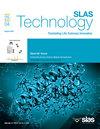ML-Driven Alzheimer’s disease prediction: A deep ensemble modeling approach
IF 3.7
4区 医学
Q3 BIOCHEMICAL RESEARCH METHODS
引用次数: 0
Abstract
Alzheimer’s disease (AD) is a progressive neurological disorder characterized by cognitive decline due to brain cell death, typically manifesting later in life.Early and accurate detection is critical for effective disease management and treatment. This study proposes an ensemble learning framework that combines five deep learning architectures (VGG16, VGG19, ResNet50, InceptionV3, and EfficientNetB7) to improve the accuracy of AD diagnosis. We use a comprehensive dataset of 3,714 MRI brain scans collected from specialized clinics in Iraq, categorized into three classes: NonDemented (834 images), MildDemented (1,824 images), and VeryDemented (1,056 images). The proposed voting ensemble model achieves a diagnostic accuracy of 99.32% on our dataset. The effectiveness of the model is further validated on two external datasets: OASIS (achieving 86.6% accuracy) and ADNI (achieving 99.5% accuracy), demonstrating competitive performance compared to existing approaches. Moreover, the proposed model exhibits high precision and recall across all stages of dementia, providing a reliable and robust tool for early AD detection. This study highlights the effectiveness of ensemble learning in AD diagnosis and shows promise for clinical applications.
机器学习驱动的阿尔茨海默病预测:一种深度集成建模方法
阿尔茨海默病(AD)是一种进行性神经系统疾病,其特征是由于脑细胞死亡导致认知能力下降,通常在晚年表现出来。早期和准确的检测对于有效的疾病管理和治疗至关重要。本研究提出了一个集成学习框架,该框架结合了五个深度学习架构(VGG16, VGG19, ResNet50, InceptionV3和effentnetb7),以提高AD诊断的准确性。我们使用了从伊拉克专门诊所收集的3714个MRI脑扫描的综合数据集,分为三类:非痴呆(834张图像),轻度痴呆(1824张图像)和重度痴呆(1056张图像)。所提出的投票集成模型在我们的数据集上达到了99.32%的诊断准确率。该模型的有效性在两个外部数据集上进一步验证:OASIS(达到86.6%的准确率)和ADNI(达到99.5%的准确率),与现有方法相比,展示了具有竞争力的性能。此外,该模型在痴呆的所有阶段都具有较高的准确性和召回率,为早期AD检测提供了可靠和强大的工具。本研究强调了集成学习在AD诊断中的有效性,并显示了临床应用的前景。
本文章由计算机程序翻译,如有差异,请以英文原文为准。
求助全文
约1分钟内获得全文
求助全文
来源期刊

SLAS Technology
Computer Science-Computer Science Applications
CiteScore
6.30
自引率
7.40%
发文量
47
审稿时长
106 days
期刊介绍:
SLAS Technology emphasizes scientific and technical advances that enable and improve life sciences research and development; drug-delivery; diagnostics; biomedical and molecular imaging; and personalized and precision medicine. This includes high-throughput and other laboratory automation technologies; micro/nanotechnologies; analytical, separation and quantitative techniques; synthetic chemistry and biology; informatics (data analysis, statistics, bio, genomic and chemoinformatics); and more.
 求助内容:
求助内容: 应助结果提醒方式:
应助结果提醒方式:


